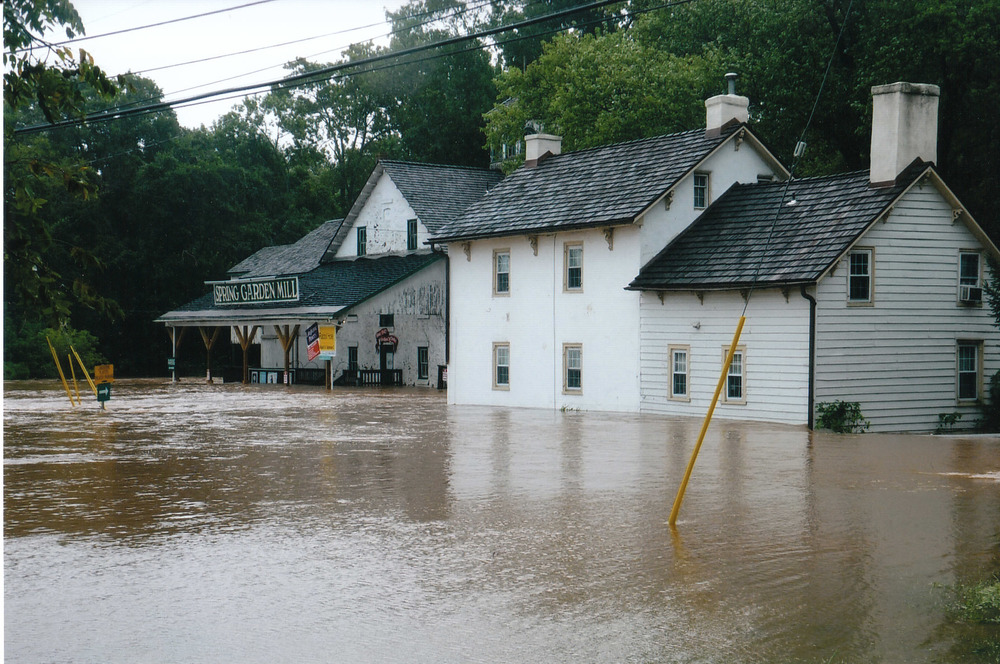by Liza Fisher Norman

In the overnight hours of August 27, 2011, our area was the victim of Hurricane Irene's wrath. Once again, the first floor of the Spring Garden Mill flooded. The last time was in September 1999 when Hurricane Floyd pushed 3 feet of water into the Mill, covering the velvet seats, rising to the stage, and cancelling the last show of the '99 season, appropriately named: Fit to Be Tied.
We got away slightly easier this time, with "only" one inch of slime and mud on every square inch of the first floor. But the effect was the same. Rabbit Hole was in the middle of its run. The players were performing to about 30 patrons who were loyal and true enough to brave the impending storm to come out for the production. All was well until intermission when the electricity went out. As patrons stood in the lobby by the emergency lights, director Rob Norman told them the rest of the show would have to be cancelled, but that they could get their money back or see another show instead. Patrons present said, "Why can't they do the second act right here in the lobby under the emergency lights? We want to know what happens." We love our patrons.
After a grueling week for all, especially President Charles Gorman, Mill Steward/Treasurer Rob Norman, and Shop Steward Ken Junkins, among others, the Mill was made "ready enough" for three more performances of Rabbit Hole to go up before the cast became unavailable due to commitments at other theaters.
It took 165 volunteer man hours (27 volunteers) and 30 professional cleaning hours to get to that point.
But there was much more that needed to be done, especially to the exterior that had the handicap ramp ripped from its anchors, the top parking lot eroded, and the lower lot rendered useless due to debris and rivers of stone. This work needed to be completed before the end of the week so that the resheduled productions of Rabbit Hole could take place. And the benefit, Showin' Off, the first fundraiser in years, was scheduled for 20 days from now.
"We make plans, and God laughs."
The grit and determination of this little theater company to rise from the ashes (or is that mud?) is laudable. And it's done with humor and camaraderie.
This must be why Langhorne Players has been around since 1947.
 Todd Granacki of California stopped by the Mill in spring 2011 to drop off this piece of memorabilia that he found in his house. It's a circa 1979 sign for the haunted house that Council Rock High School used to hold at the Mill as a fundraiser. Does anyone remember that? He said they used the upper floors as well as the main one, and the whole place was dark. Must have been pretty creepy. Thanks very much for remembering us, Todd, and schlepping this sign from CA to PA.
Todd Granacki of California stopped by the Mill in spring 2011 to drop off this piece of memorabilia that he found in his house. It's a circa 1979 sign for the haunted house that Council Rock High School used to hold at the Mill as a fundraiser. Does anyone remember that? He said they used the upper floors as well as the main one, and the whole place was dark. Must have been pretty creepy. Thanks very much for remembering us, Todd, and schlepping this sign from CA to PA.




